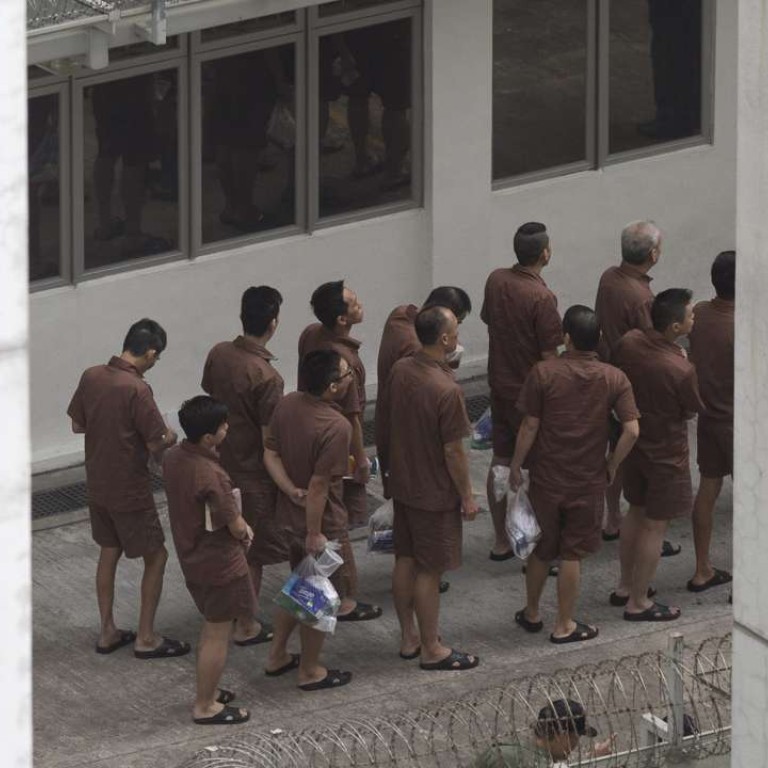
Prisoner rehabilitation is a job for Hong Kong’s community at large
Grenville Cross says the Correctional Services Department is doing an exemplary job to reform and rehabilitate inmates, but greater corporate and community support can take it much further
Chief Justice Geoffrey Ma Tao-li rightly noted in June that the Correctional Services Department has “earned the respect and confidence of the community”. It has done much to promote criminal justice in Hong Kong, not just by removing criminals from society but also by rehabilitating them.

Hong Kong prisons see uptick in non-Chinese inmates with many behind bars over drug offences
Recidivism, or readmissions to correctional services institutions within two years of discharge, fell from 36.5 per cent in 2004 to 27.1 per cent in 2013. The department places great emphasis on rehabilitating offenders, but also liaises with NGOs to ensure inmates have a smooth transition back into the community.

Hong Kong prisoners get more exercise time outside than our schoolchildren, research reveals
The department also works hard to promote an environment that is conducive to rehabilitation, and intolerant of crime. Inside the institutions, violence, whether among inmates themselves or towards staff, is strictly contained, and dealt with severely by internal disciplinary measures, with the more serious cases going to court. Opportunities for crime are minimised, officers foil numerous attempts each year to smuggle drugs into correctional facilities. Inmates are closely supervised, and the staff-to-inmate ratio is high, with 6,907 officers managing 29 facilities (including correctional institutions, halfway houses and custodial wards of public hospitals), which contributes to good order.
When discharged inmates get individual support and jobs, their chances of recidivism are significantly decreased
Some inevitably reoffend upon release, but this certainly does not reflect on the department, which will have done its best to rehabilitate them. Recidivists often lapse because they can’t find a job, are unable to readjust to life, or simply lack the will to renounce crime and its easy pickings. Private corporations can do much more to assist ex-inmates, particularly those detained for a long time and facing a now-unfamiliar world.

Mindset on prisoner suicides has to change
When discharged inmates get individual support and jobs, their chances of recidivism are significantly decreased. It is, therefore, up to the community at large to complement the excellent rehabilitative service already provided by the department.
Grenville Cross SC is a criminal justice analyst

